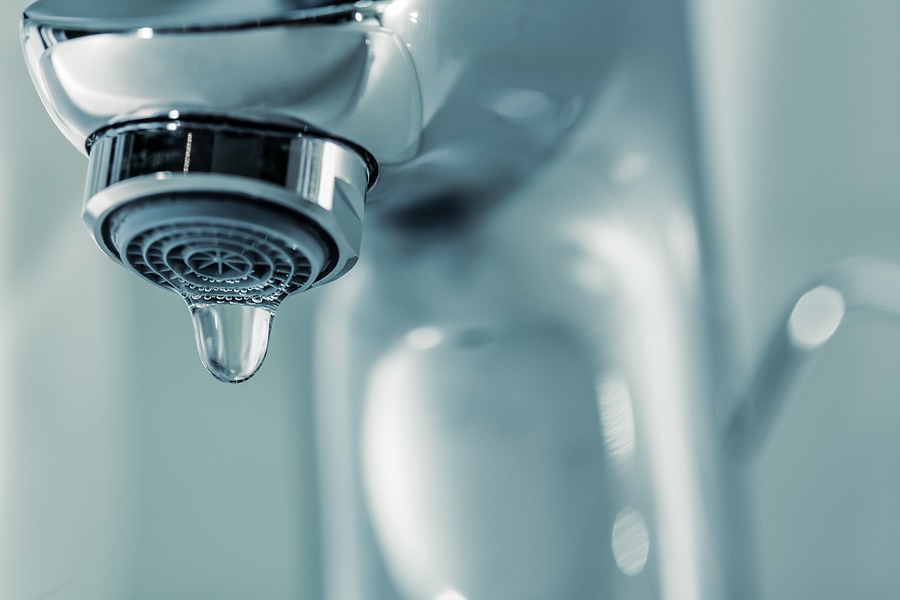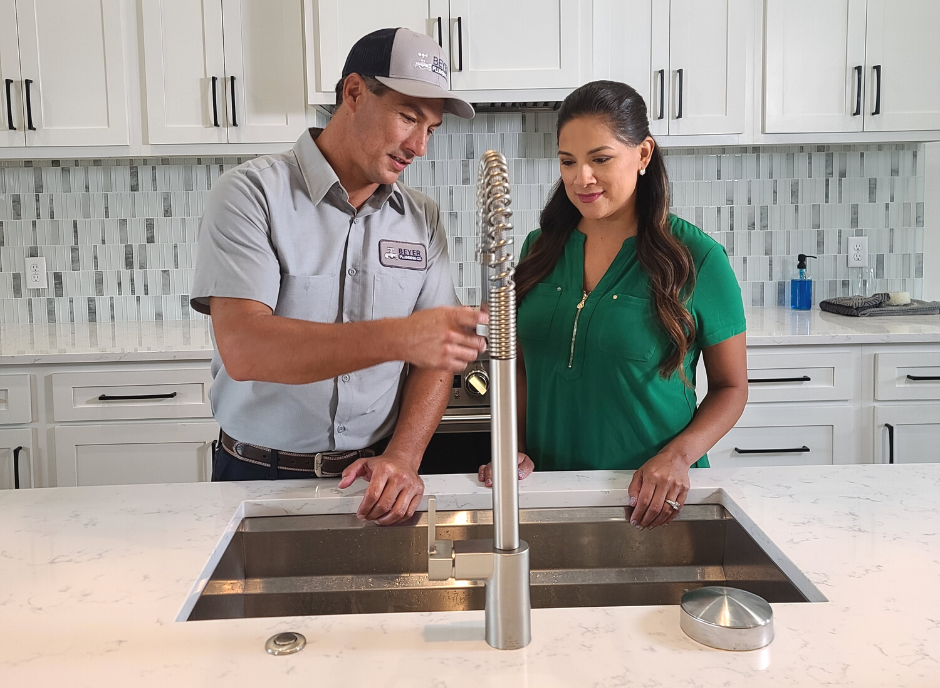What It's Crucial to Fix a Leaking Faucet
What It's Crucial to Fix a Leaking Faucet
Blog Article
Every person will have their own thinking involving Why Are My Faucets Dripping (And Can I Fix It Myself)?.

Trickling faucets might feel like a minor hassle, yet their influence exceeds just the aggravation of the noise. From wasting water to sustaining unneeded financial prices and health and wellness threats, ignoring a trickling faucet can result in various repercussions. In this post, we'll delve into why it's vital to address this common house issue without delay and properly.
Waste of Water
Ecological Effect
Dripping taps add dramatically to water wastefulness. According to the Epa (EPA), a solitary tap trickling at one drip per second can waste greater than 3,000 gallons of water annually. This not just pressures water resources however additionally impacts ecological communities and wild animals based on them.
Financial Costs
Enhanced Water Expenses
Past the ecological effect, trickling taps can inflate water bills significantly. The gathered waste in time equates into higher energy expenditures, which can have been prevented with prompt fixings.
Potential Property Damages
Moreover, prolonged dripping can cause damage to components and surfaces bordering the faucet. Water accumulation can cause discoloration, deterioration, and also architectural concerns if left ignored, leading to added fixing costs.
Health and wellness Issues
Mold and Mildew Growth
The consistent existence of wetness from a leaking faucet creates a suitable atmosphere for mold and mildew and mildew development. These fungi not just endanger indoor air top quality however likewise posture health and wellness threats, especially for people with breathing problems or allergies.
Waterborne Diseases
Stagnant water in trickling taps can end up being a breeding place for germs and other pathogens, boosting the danger of waterborne illness. Impurities such as Legionella bacteria prosper in stationary water, potentially bring about significant ailments when consumed or inhaled.
Do it yourself vs. Expert Repair
Advantages and disadvantages of Do It Yourself Repair Work
While some may try to take care of a dripping faucet themselves, DIY fixings come with their very own set of obstacles. Without proper knowledge and tools, do it yourself attempts can worsen the concern or lead to insufficient repairs, prolonging the trouble.
Advantages of Hiring an Expert Plumber
Employing an expert plumber makes sure that the underlying source of the leaking faucet is attended to effectively. Plumbings possess the experience and devices to diagnose and repair tap problems successfully, conserving time and reducing the threat of additional damages.
Step-by-Step Guide to Dealing With a Dripping Faucet
Devices Required
Prior to trying to repair a trickling faucet, collect the necessary tools, consisting of an adjustable wrench, screwdrivers, replacement components (such as washing machines or cartridges), and plumber's tape.
Common Tap Issues and Their Solutions
Recognize the type of faucet and the details issue triggering the drip. Typical troubles include worn-out washing machines, rusty shutoff seats, or defective O-rings. Refer to maker instructions or on the internet tutorials for detailed assistance on repair services.
Preventive Measures
Routine Upkeep Tips
To prevent leaking taps, execute routine maintenance such as cleaning up aerators, evaluating for leaks, and replacing worn-out components quickly. In addition, take into consideration setting up water-saving gadgets or upgrading to a lot more reliable fixtures.
Importance of Prompt Repair Works
Resolving dripping taps as soon as they're noticed protects against more water wastefulness and potential damage, eventually conserving both water and money in the long run.
Effect On Residential Or Commercial Property Worth
Assumption of Well-Maintained Building
Maintaining a home in good condition, including attending to upkeep concerns like dripping taps, boosts its regarded value and desirability among prospective purchasers or tenants.
Impact on Resale Value
Properties with well-maintained plumbing components, consisting of taps, command higher resale values in the real estate market. Dealing with dripping faucets can contribute to a positive impression throughout residential property examinations and settlements.
Ecological Duty
Individual Payment to Preservation
Taking obligation for repairing trickling taps lines up with broader efforts towards water preservation and ecological sustainability. Every person's actions jointly make a substantial effect on protecting precious resources.
Sustainable Living Practices
By focusing on punctual fixings and adopting water-saving habits, individuals contribute to lasting living methods that profit both existing and future generations.
Verdict
Dealing with a trickling tap surpasses mere comfort; it's a crucial action toward preserving water, lowering economic expenses, and securing health and wellness and residential property. Whether through DIY repairs or professional aid, taking action to take care of trickling faucets is a small yet impactful method to advertise liable stewardship of resources and add to a healthier, extra lasting future.
How to Fix a Dripping or Leaky Faucet
A leaking faucet is one of the most common problems that homeowners encounter, but it being commonplace doesn’t make it any less annoying. The constant drip drip drip of a leaking bathtub faucet, showerhead, or sink tap can disturb your home’s serenity. Left neglected, a dripping faucet can also result in higher water bills and discoloration or mold growth in your sink or plumbing fixtures.
Fortunately, you don’t have to be a trained plumber to know how to stop a dripping faucet. With some basic tools, replacement parts, and a little patience, leaky faucet repair is a breeze. In this article, we’ll explain what causes dripping faucets and how you can fix them.
What Causes a Leaking Faucet?
Kitchen and bathroom faucets come in all manner of designs, but most involve some combination of valves, O-rings, seals, and washers. The O-ring is usually the weakest link, but any one of these pieces can wear down over time. Heat, moisture, temperature fluctuations, minerals, mold, and movement can contribute to warping and corrosion, breaking the watertight seal. This just comes with the territory of being a homeowner. Everything is always subject to wear and tear, and some component parts of your appliances and fixtures need to be replaced on occasion. At least replacement O-rings are cheap!
More rarely, dripping faucets can be a symptom of excessively high water pressure. Were this the case in your home, you would probably notice that the leak is not isolated to one faucet. Water pressure issues are harder to resolve on your own. We recommend contacting a professional plumber if you suspect your water pressure is too high.
How to Fix a Dripping Faucet
Pipe wrench or monkey wrench Allen wrench set Screwdrivers Old towel or rag Shut off the water.
Before you do anything, you need to turn off the water to keep from drenching your kitchen or bathroom. You should find a valve under the sink and against the wall. Once you’ve turned this valve, try turning the faucet on to confirm that the water source has been cut off.
If you can’t locate your local valve for the faucet you’re working on, you can always shut off the water to the house at the main valve. Of course, this will prohibit anyone from using the sinks, showers, or toilets while you’re working on the faucet that’s giving you trouble.
Plug or block the drain.
You’ll be disassembling the faucet and removing some small bits of hardware. Plug the drain with a stopper or rag to avoid the possibility of a small screw falling into your P-trap.
Take apart the faucet assembly.
There are several varieties of kitchen and bathroom faucets, each with its own manner of assembly. For detailed instructions on how to disassemble your faucet, you can refer to the fixture’s manual or contact the manufacturer. If you know whether you have a ball, disc, cartridge, or compression faucet, you can find detailed schematics online.
In general, you need to begin by removing the faucet handles. You might notice a small screw that you’ll need to remove with a screwdriver or Allen wrench. If you don’t see any visible securing hardware, it’s likely hidden under a decorative cap that can be unscrewed or popped off with flathead screwdriver.
Remove each piece methodically, consulting a schematic when necessary. Take notes or arrange the pieces in such a way to make it easier to correctly reassemble the faucet later.
Remove the cartridge.
Once you’ve removed the handles and securing hardware, you should be able to remove the valve cartridge or stem. Some cartridges will slide right out. Other faucet models will require you to loosen a nut with a pipe wrench before you can remove the valve stem.
Examine the exposed hardware.
With the cartridge or stem removed, inspect the component parts. Check the rubber O-rings for wear and tear. Also examine the seat washer for corrosion or other damage. These pieces are usually the responsible parties for a dripping faucet, but it’s worth inspecting the other component parts while you have the faucet disassembled.
Find replacement parts.
Once you’ve identified which faucet component has failed, find an identical replacement. Your local hardware store should have O-rings, seat washers, and other standard components in stock. If you have a luxury or uncommon faucet, you may have to contact the manufacturer for a replacement part.
It’s a good idea to take your old parts with you to the hardware store so you can compare them with the store’s inventory and be sure you’re purchasing the correct replacement.
Reassemble the faucet.
With your new parts in hand, reconstruct the faucet and handles. Don’t be tempted to overtighten screws or nuts. You might think this could create a better seal, but it can instead damage or bend a delicate part of the assembly and create a new problem for you.
Turn on the water and test the faucet.
The only thing left to do is test your work. Unplug the sink, turn the water back on, and try the faucet. Congratulate yourself on a job well done!
https://www.libertyhomeguard.com/how-to-fix-a-dripping-or-leaky-faucet/

Do you like reading up on Water Dripping from Faucet: Why and How to Fix? Put feedback down below. We would be delighted to know your responses about this piece. We are looking forward that you visit us again before long. If you enjoyed our article if you please make sure you remember to share it. I recognize the value of your readership.
Report this page